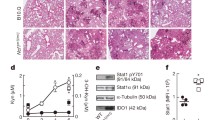Abstract.
Chronic granulomatous disease is an inherited disorder of the NADPH oxidase characterized by severe bacterial and fungal infections and disordered inflammation. We propose that NADPH oxidase has a key role in regulating acute neutrophilic and T cell responses, which in turn restrains fungal growth and calibrates the inflammatory response to minimize injury and allergy. In this model, superoxide-induced activation of indoleamine 2,3-dioxygenase (IDO) is a central mechanism by which the optimal balance of antifungal host defense and immune tolerance occurs. This model is based on studies in mice and requires correlation in humans.
Similar content being viewed by others
Author information
Authors and Affiliations
Corresponding author
Additional information
Received 18 August 2008; received after revision 29 November 2008; accepted 16 December 2008
Rights and permissions
About this article
Cite this article
Segal, B.H., Romani, L. & Puccetti, P. Chronic granulomatous disease. Cell. Mol. Life Sci. 66, 553 (2009). https://doi.org/10.1007/s00018-009-8506-y
Published:
DOI: https://doi.org/10.1007/s00018-009-8506-y




